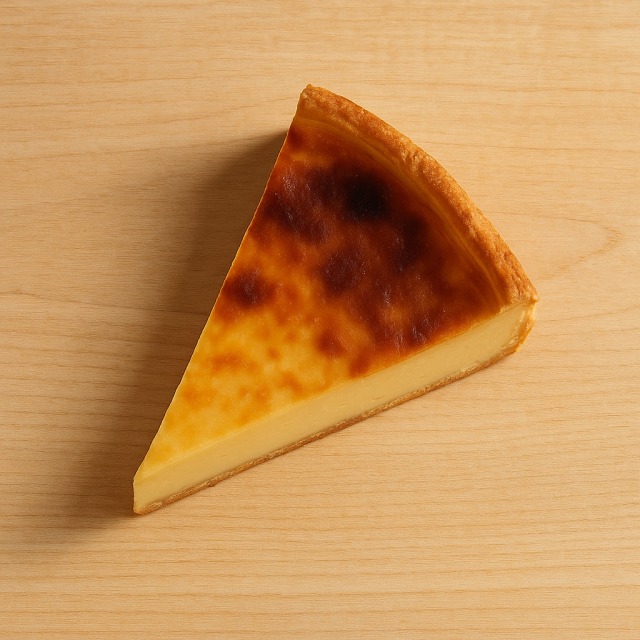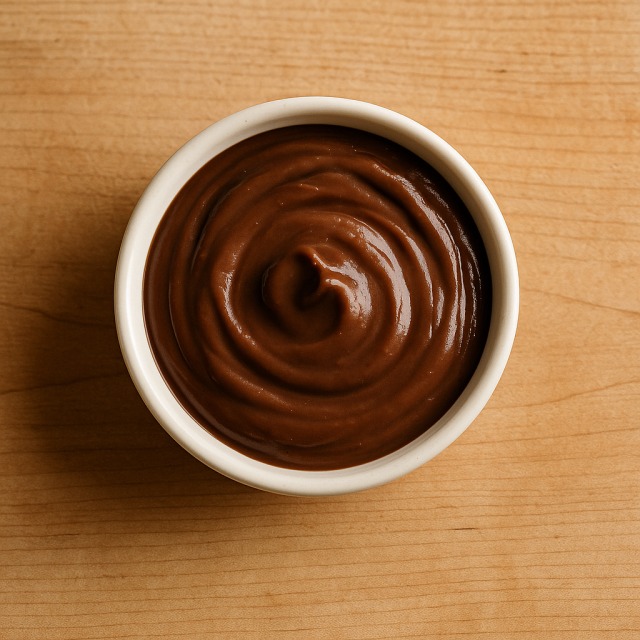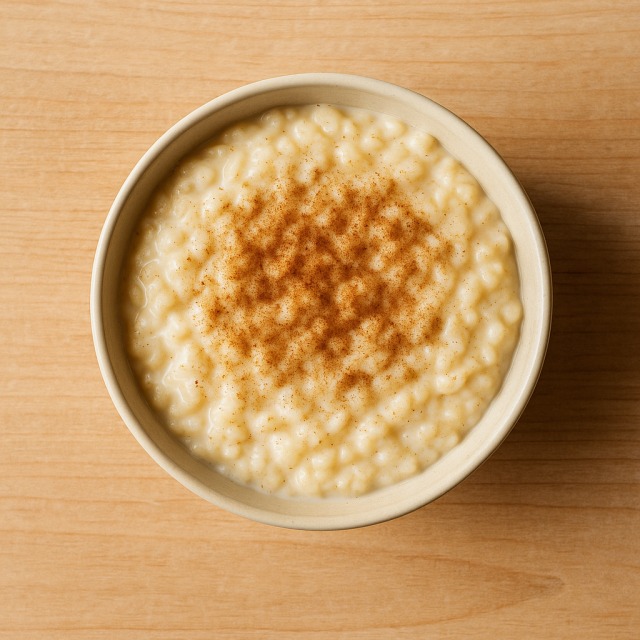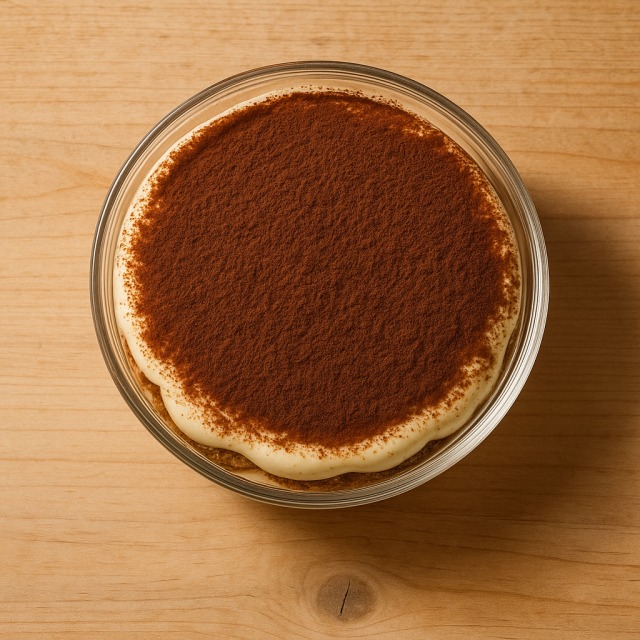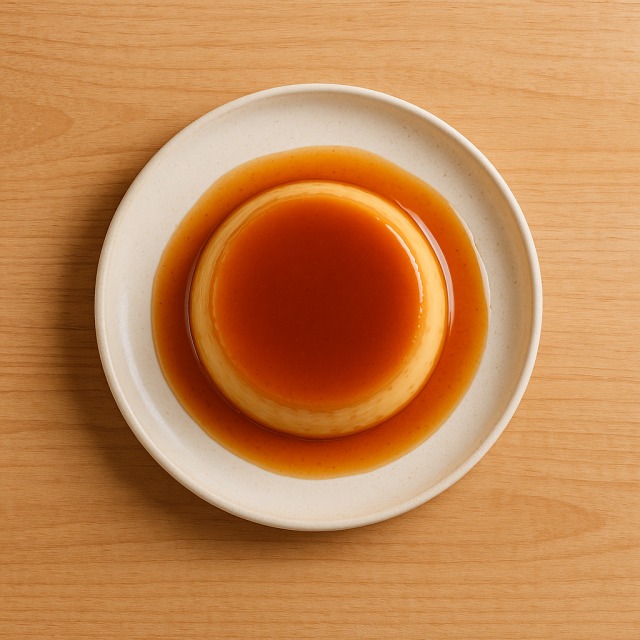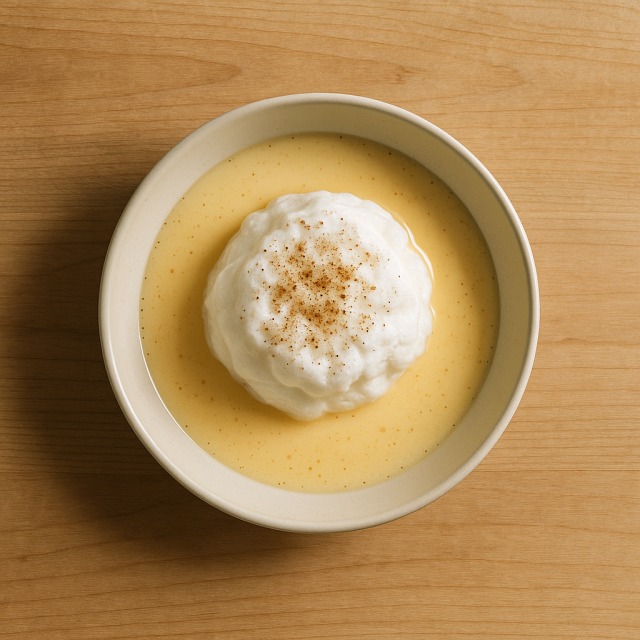Calorie Chart / Desserts / Custard
How Many Calories Are in Custard?
Calculation of the nutritional value & Recommended Dietary Intake of custard
For ml and a calorie requirement of kcal
| Calories 19 kcal | Proteins 0.8 g | Lipids 0.9 g | Carbohydrates 2 g |
| 1% | 1% | 1% | 1% |
Health benefits of custard
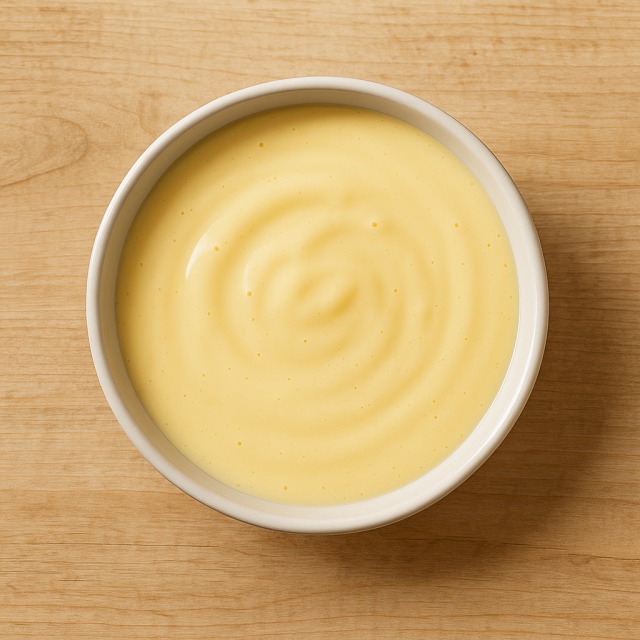
Custard - 100ml
Calories 126 kcal
Proteins 5 g
Lipids 6 g
Carbohydrates 13 g
Custard supplies a satisfying creaminess without the energy load of richer pastries: at 126 calories per 100 g, it sits in the moderate-calorie category. Those 126 calories include 5 g of proteins from the egg yolk and white, which can improve satiety and help limit overall calories eaten at the same meal.
Made with milk, custard provides calcium and phosphorus for bone health, plus vitamin B2 and vitamin B12. The eggs contribute vitamin D, selenium, and choline, nutrients often missing from high-calorie desserts. The modest 6 g of lipids keeps fat-derived calories lower than in whipped-cream confections, while the 13 g of carbohydrates offer quick energy without tipping the calorie balance excessively.
Historically, custard—known in France as "crème anglaise"—was served in medieval courts before spreading across Europe. Its smooth texture made it a comfort food during convalescence, a role still useful today for people needing controlled calories but easy digestion. Because the basic recipe is simple, the nutrient profile and resulting calories can be adapted (for example, using skimmed milk) without losing its characteristic vanilla aroma.
Tips for incorporating custard into a balanced diet
To keep calories under control, serve a 100 g portion of custard as a sauce over fresh fruit such as strawberry, banana, or baked apple. The natural fiber of fruit increases fullness, helping you avoid extra calories from larger dessert servings.
If you crave a pastry, fill a small choux to make a lighter "religieuse" instead of a full éclair; the custard delivers flavor while reducing the total pastry dough calories. For a comforting winter treat, pour custard over warm crumble or spoon it beside a slice of fruit tart; be mindful of added pastry calories and keep portions modest.
Cooking tips: replace whole milk with semi-skimmed to cut about 20 calories per 100 g of finished custard; sweeten gently with a teaspoon of honey instead of sugar to shave a few calories and add antioxidants. Athletes looking for post-workout recovery may whisk in extra protein powder (unflavored) and still keep the overall calories reasonable compared with commercial shakes.
Frequently Asked Questions
- How many calories are in custard?
- There are 126 kcal per 100 g.
- Is custard high in calories compared with yogurt?
- Custard has more calories than plain yogurt but fewer calories than many cream-based desserts; it is considered moderate in calories.
- Does homemade custard have fewer calories than store-bought versions?
- Homemade recipes let you control sugar and fat, so you can cut 20-40 calories per 100 g compared with industrial custard that often adds cream and stabilizers.
- How can I lower the calories in my custard recipe?
- Use skimmed milk, reduce added sugar by one-third, and thicken gently; these tweaks can drop calories by 15-20%.
- How many calories are in a 200 g bowl of custard?
- A 200 g serving delivers roughly 252 calories (2 × 126 kcal).
- Are the calories in custard mainly from sugar or fat?
- About half the calories come from carbohydrates (mostly sugar), and the rest from a moderate amount of fat and proteins.
Similar foods
Information provided by Calorie Menu may contain inaccuracies or errors. It cannot, under any circumstances, substitute medical advice or medication.
